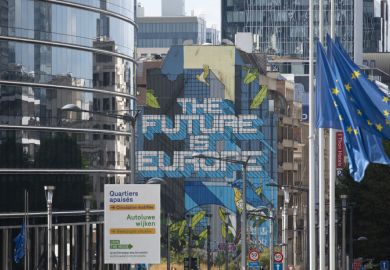Some years ago, I was approached by a major oil company – let’s call it X. It was planning offshore structures in the Arctic Ocean, which is covered by ice for much of the year. Sea ice is not very strong, but there is a lot of it, so when the wind and current drive it against a structure the force can be very large.
X was worried because a competitor, Y, had developed a method for calculating ice forces that X had a gut feeling led to serious overestimates, but it was not sure why and it had no method of its own. Unless something was done, Y’s method would be accepted by the industry and X would be compelled by regulators to abide by its excessive conservatism.
I responded in the standard way: we would put some research students on it, perhaps hire a couple of postdocs, and so on. “With luck,” I told them, “we might get somewhere in two or three years.”
“Forget that,” they answered. “That would be far too long. Think some more!”
The alternative I came up with was to create what we called, slightly pretentiously, a thinktank. The idea was to bring together a group of mechanics specialists and ask them to work intensively on the problem for a week, and see what came out. X approved and we agreed to go ahead, with a modest budget under a contract through the university.
We chose six people: one from the oil company and five from universities. They were selected very carefully because they had to be competent, confident in themselves, capable of working in groups, able to question received ideas but also to float new ones constructively. Some excellent people failed to meet those conditions. We deliberately chose only two who had worked on ice before, to apply fresh minds to the problem.
A couple of months after the oil company’s initial approach, the group assembled in a Cambridge hotel, chosen because it is pleasant, quiet and close to good libraries and a range of academics who might if necessary be pulled in to help. Participants had to agree to total commitment: they were not to take the opportunity to give seminars, visit colleagues or escape to London. They would work together from breakfast at 8am until the bar closed, beginning on Sunday evening, and concluding on Friday afternoon with a presentation to senior executives from the oil company. Travel expenses would be paid, plus a modest honorarium a long way below consulting rates. Any resulting papers would be co-authored by all six participants.
It is important to emphasise that the intensity and depth of our approach went far beyond mere brainstorming – although we adopted the brainstorming ethos, encouraging participants to put forward ideas without fear of criticism. Still, I was well aware that the meeting could turn out to be no more than an expensive bull session, stimulating and enjoyable for the participants but of no value to the oil company.
But, in the event, it went well. We began with a brief presentation by the oil company and gave out a dossier of relevant papers. We then talked about the subject, argued, made notes and, from time to time, broke into smaller groups or went back to our rooms for some concentrated work on our own. We focused on two areas. If ice moves very slowly, it behaves like a glacier and slowly deforms in creep. But if it moves faster, as it usually does, its behaviour is totally different, and it fragments. The meeting led to a novel application to the creep problem of a theory developed by nuclear engineers, and to a new understanding of the relevance of ice fracture and how it might be accurately quantified.
X was pleased. In crude terms, it was now at least level with Y, and arguably ahead. Everyone also agreed that the meeting had been good fun – and this is important because people work harder and more creatively when they are enjoying themselves.
Two papers were ultimately published in reputable journals, and two more meetings with the same structure were held over the next two years. Regrettably, the original group never met again – in part because two leading members changed jobs and were forced towards different priorities. But the subsequent meetings further developed the understanding of fracture, which became a focus of subsequent research and continues to influence the field many years later.
I have used the thinktank approach on two further occasions, both of which resulted in stimulating discussions, if not papers. If the participants are selected carefully, it is a good way to quickly give a company and a group of researchers a serious presence in the subject: a foundation on which they can build larger research teams (as some participants in the original meeting did).
But the approach plainly also has major disadvantages in the context of university research. It doesn’t generate significant income, although a more commercially oriented institution could find a way to extract more than we did. Intellectual property, confidentiality and patents can be thorny issues, and the ground rules need to be carefully worked out ahead of time. Singling out the very best people and putting them to work plainly does nothing to train research students and is unashamedly elitist: an approach that is unpopular with those who try to pretend everyone is equal.
It also makes many academics and industry researchers nervous because they don’t want their received ideas to be challenged. Others get upset at the sight of colleagues accomplishing in a few days what normally takes months (or years) of plodding.
But there is no question that thinktanks usefully complement the traditional approach to research – and I would encourage everyone to give the idea a try.
Andrew Palmer was a professor of civil engineering at the National University of Singapore until his retirement in June. He has since returned to his consulting practice.
POSTSCRIPT:
Print headline: I need it yesterday
Register to continue
Why register?
- Registration is free and only takes a moment
- Once registered, you can read 3 articles a month
- Sign up for our newsletter
Subscribe
Or subscribe for unlimited access to:
- Unlimited access to news, views, insights & reviews
- Digital editions
- Digital access to THE’s university and college rankings analysis
Already registered or a current subscriber? Login





